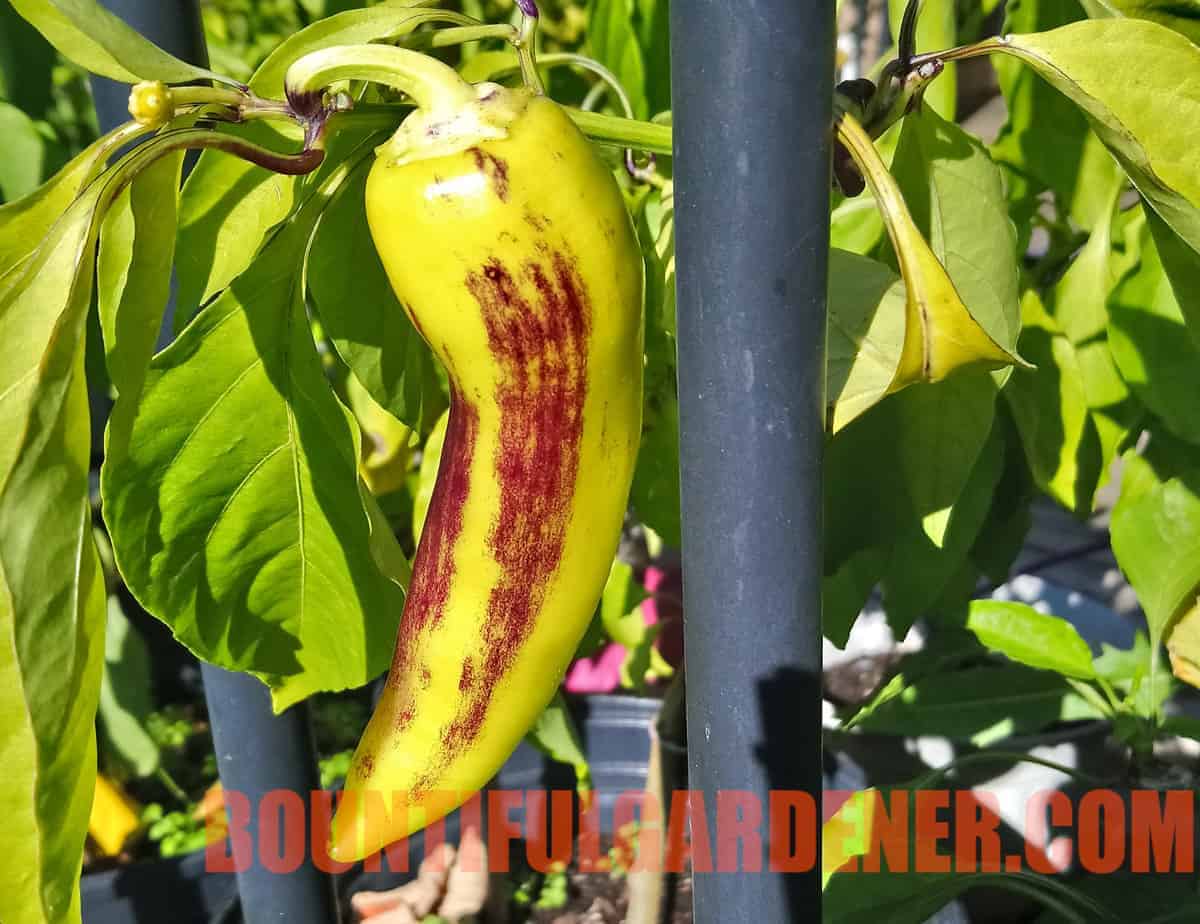Whenever we see things in the garden we don’t expect or are not “normal”, us gardeners tend to worry a lot. Fortunately, if you notice your peppers are turning black, or dark purple, it’s more often than not a natural process you don’t need to worry about.
Peppers can sometimes naturally turn black (or dark purple) during the ripening process. The skin can also turn black when exposed to excess sunlight or cold temperatures. Some pepper varieties are more prone to getting this dark purple or black discoloration, such as jalapenos and some bell peppers. This is normal and should not cause worry unless they have tiny black dots or are turning black and soft, which could be a sign of disease or blossom end rot.
On this page:
Does My Pepper Turning Black Mean It Has a Disease?
In most cases, no. It’s actually a natural process in peppers, and some varieties of peppers, it’s more common. Peppers that look otherwise healthy but whose skin is turning partially purple or black are safe to eat and this not affect the flavor. However, if you notice small black spots or your pepper is turning soft and black, then that is a sign of a problem (more on that later).
What Causes Peppers to Turn Black (or Dark Purple)
The natural ripening process in many varieties
There are a lot of pepper varieties that naturally turn purple during the ripening process. Often these types of peppers start green, then turn some shade of purple before they turn yellow or red. A well-known example is the Chinese 5-Color pepper, which starts as a dark purple before turning cream, yellow, orange, and finally red. Some bell peppers will also get a dark purple coloration while turning red, which looks black when combining the purple and red pigments in the skin.
Some pepper varieties also naturally have both black or dark purple fruit and leaves.
High sun exposure
Some peppers, when exposed to excess UV light, will get a purple “suntan”. This is the pepper’s natural defence against UV radiation. The leaves may also get some purple streaking, which is normal. I will occasionally see this in indoor peppers growing under strong grow lights.
Sun exposure is not a problem unless your peppers are getting bleached dry spots, that’s damage from too much intense sunlight, called sunscald.
Cold temperatures

Cold temperatures can promote the same purple discoloration. Some varieties are more prone to this, such as jalapenos. In fact, as I’m writing this in early fall, I have a bunch of healthy jalapeno peppers that have turned purple in the past month.
This is usually nothing to worry about, but peppers are still frost tender. Moreover, if temperatures stay consistently under 46°F (7.7°C) that can also damage your pepper fruits. You can read more about the effect of extreme cold on peppers (and tomatoes) here.
When Peppers Turning Black Is a Problem
If your peppers are getting tiny black dots or they’re turning soft and black, that is not natural. Tiny, soft, black dots can be a sign of bacterial spot infection or the peppers rotting from insect bites.
If you notice your peppers are turning black and soft on the bottom tip of the pepper, that is a tell-tale sign of blossom end rot.
Blossom end rot is technically caused by a lack of calcium, which is important in developing fruit. However, most gardens have enough calcium. Most cases of blossom end rot are caused by inconsistent watering and your pepper plant constantly wilting from drought. Since roots can’t absorb calcium from dried out soil, the plant can’t send calcium to the growing peppers, resulting in blossom end rot.
In either case, if you have soft black spots or blossom end rot, you should remove the pepper so the plant can focus on developing the other healthy peppers. Blossom end rot peppers can be safe to eat if you cut and discard the bottom half of the pepper, but always check inside to see if it’s started to rot higher up inside the pepper.
